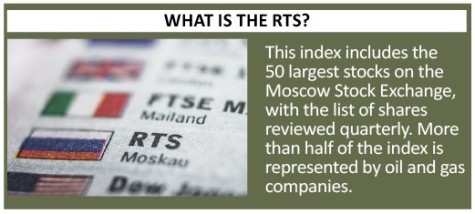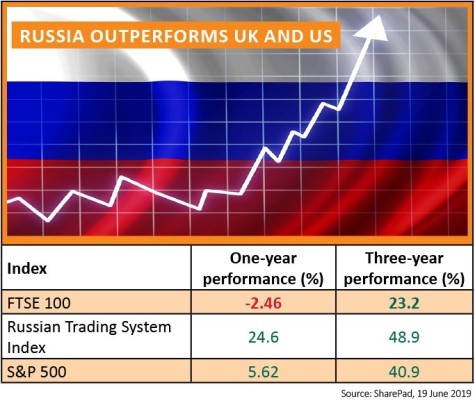Russian growth has proved to be fairly robust of late despite the pressure from volatile oil prices, international sanctions and structural issues in the economy.

The country’s flagship Russian Trading System (RTS) index has outperformed both the US S&P 500 and the UK’s FTSE 100 over both a one-year and three-year time period.
With the Central Bank of Russia (CBR) potentially poised to press the trigger on further interest rate cuts, having reduced its policy rate to 7.5% at its last meeting on 14 June, Russian stocks could be set to continue their strong run.
Consultant Capital Economics comments: ‘The statement (accompanying the latest rate cut) struck a dovish tone – the CBR seems less concerned about inflation.
‘We think that the key rate will be lowered to 7.25% by the end of this year and 6.75% by end-2020.’ The CBR has the leeway to pursue this course of action thanks to a more stable inflation backdrop.
In valuation terms Russian equities compare favourably with other emerging markets and those in the developed world. According to Germany’s Star Capital, Russia trades on a price-to-earnings ratio of 5.5-times and offers a dividend yield of 6.5%.
Amid state pressure, Russian companies are increasing their generosity to shareholders. This was reflected in energy firm Gazprom’s recent decision to hike its dividend twice in the space of a week to 16 rubles.
This move was the catalyst for a double-digit increase in a share price which had tracked sideways for months, if not years.

This outlook is part of a series being sponsored by Templeton Emerging Markets Investment Trust. For more information on the trust, visit here
‹ Previous2019-06-27Next ›

 magazine
magazine










